Abstract
Chlorella autotrophica, a euryhaline marine alga, and Stichococcus bacillaris, a salt-tolerant soil alga, grow in the presence of methionine sulfoximine (MSX), an inhibitor of glutamine synthetase, by maintaining high levels of NADPH-glutamate dehydrogenase. Nitrate reductase showed no change in MSX-adapted cells. For both species, MSX-adapted cells retained their capacity to accumulate proline in response to salinity, and in S. bacillaris no major shift was observed in the presence of MSX toward the accumulation of sorbitol. Following transfer from 33 to 150% artificial seawater (ASW), both algae exhibited increases in organic solute levels without a lag. Within 6 h of this sudden increase in salinity, the levels of proline in C. autotrophica and of proline and sorbitol in S. bacillaris were similar to those found in steady state 150% ASW cultures. Following transfer from 33 to 150% ASW, S. bacillaris continued [14C] bicarbonate photoassimilation at a normal rate and maintained active enzymes of nitrogen assimilation. The incorporation of [14C]phenylalanine into proteins was inhibited for about 30 minutes in MSX-free cells and 90 minutes in MSX-adapted cells following transfer from 33 to 150% ASW; the recovery after these lag periods was almost complete.
Full text
PDF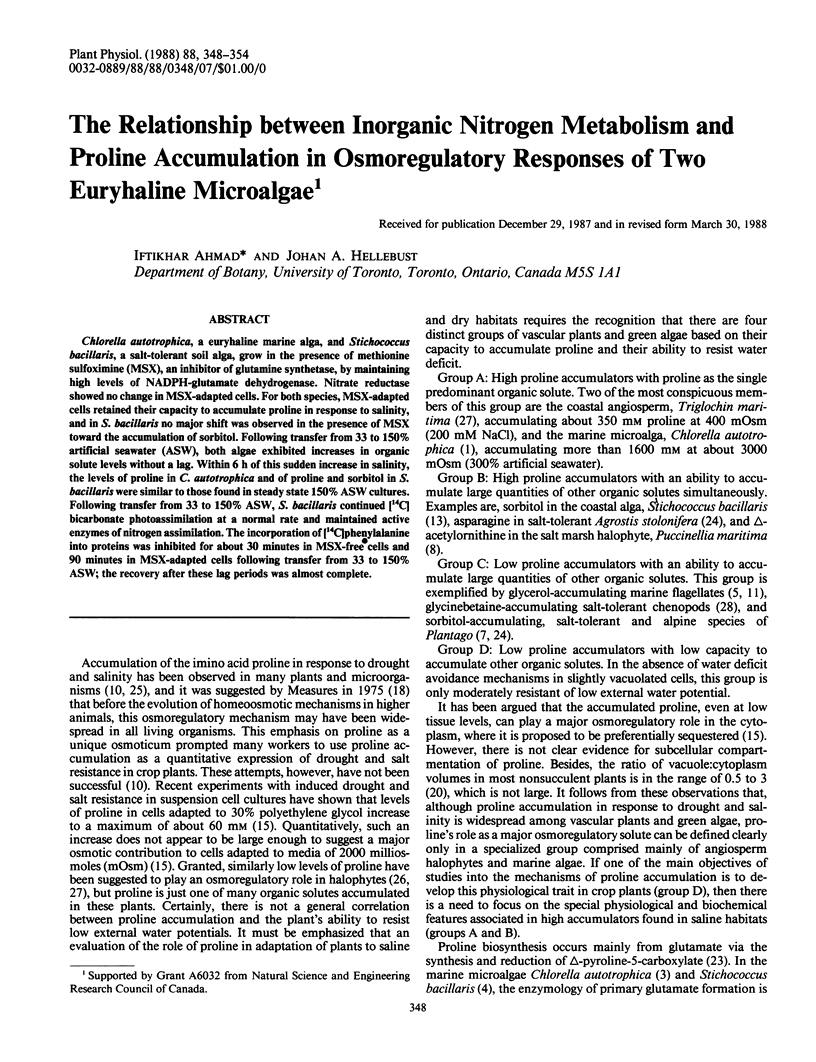
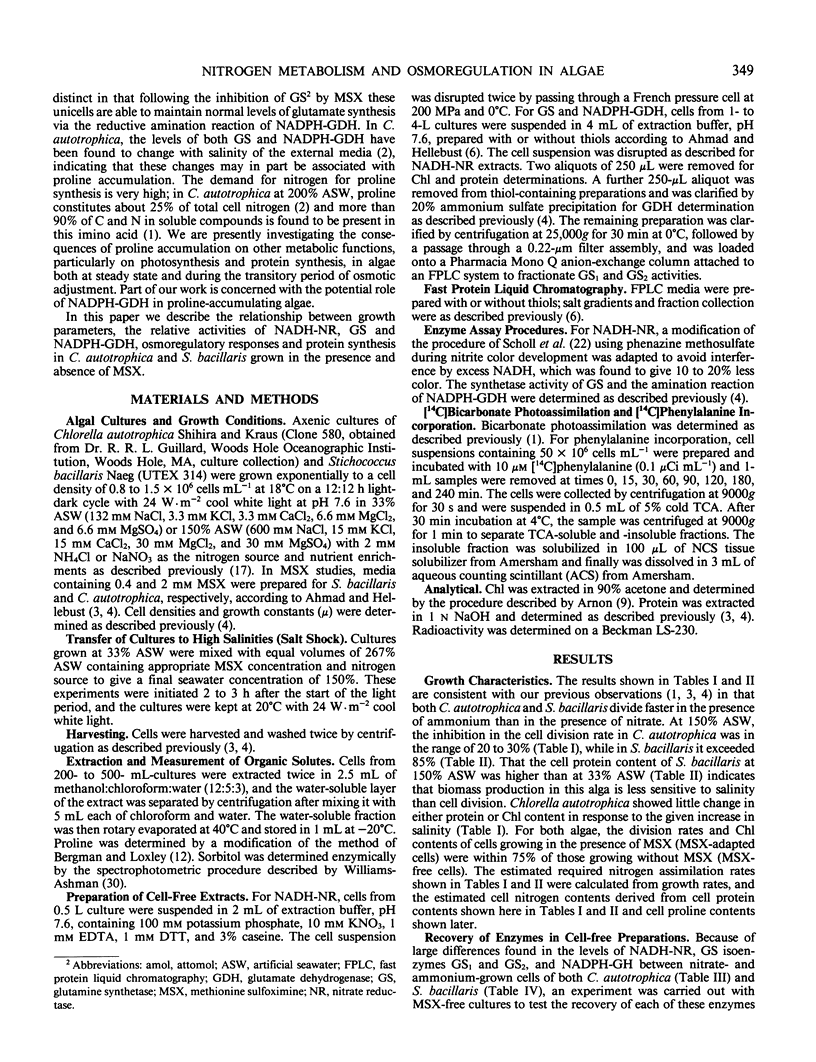
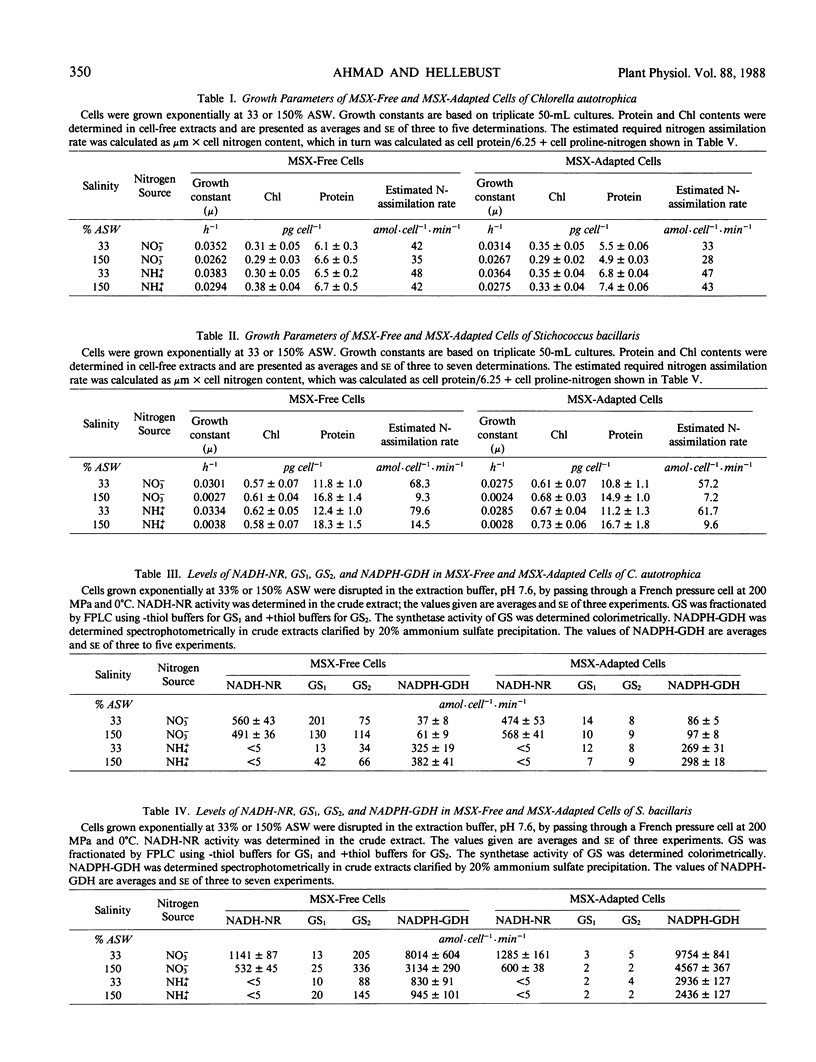
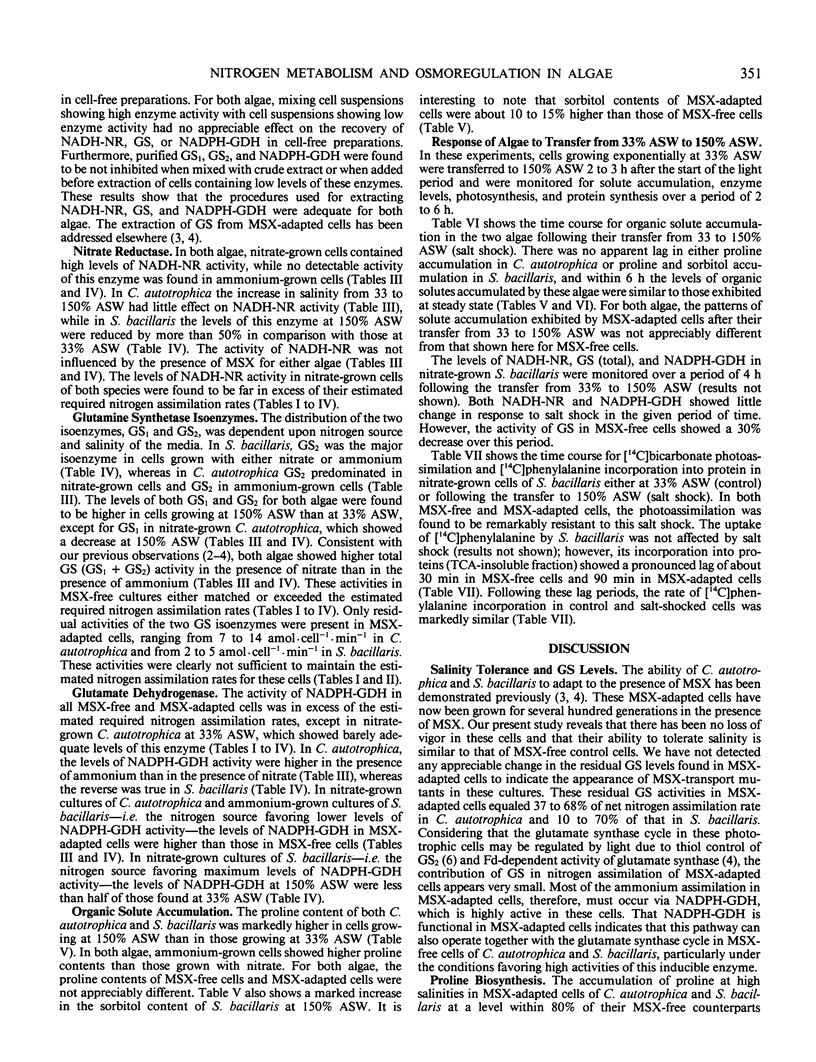
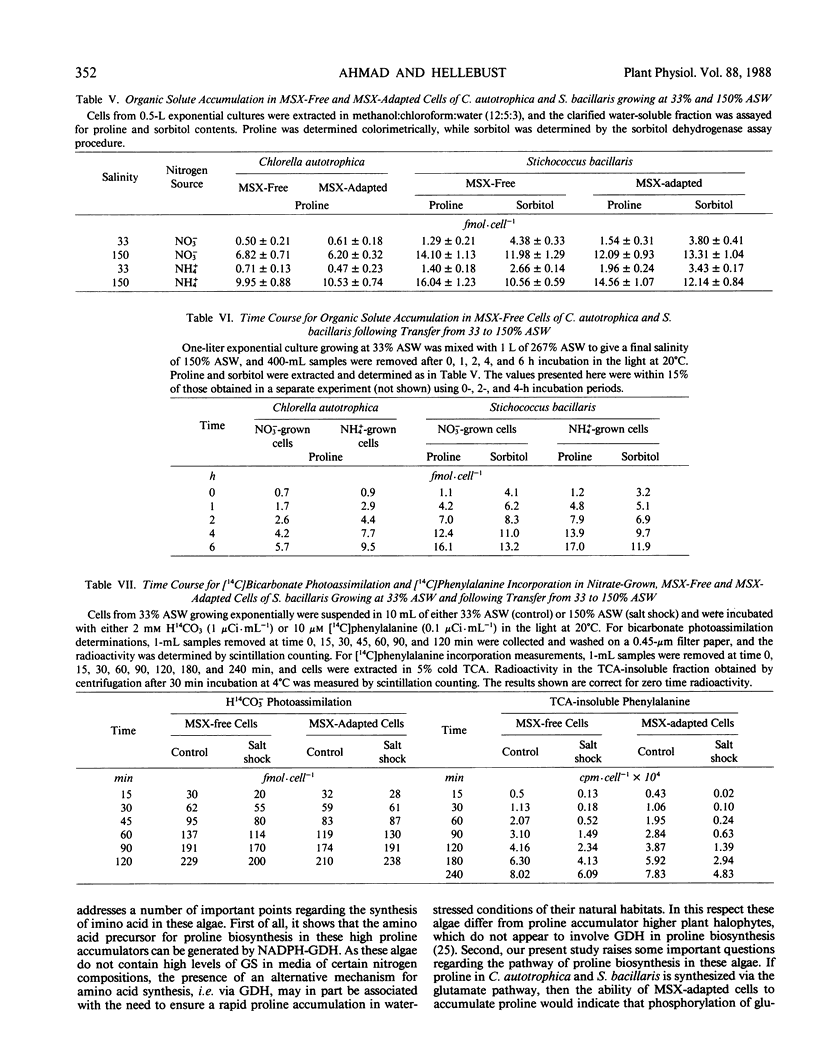
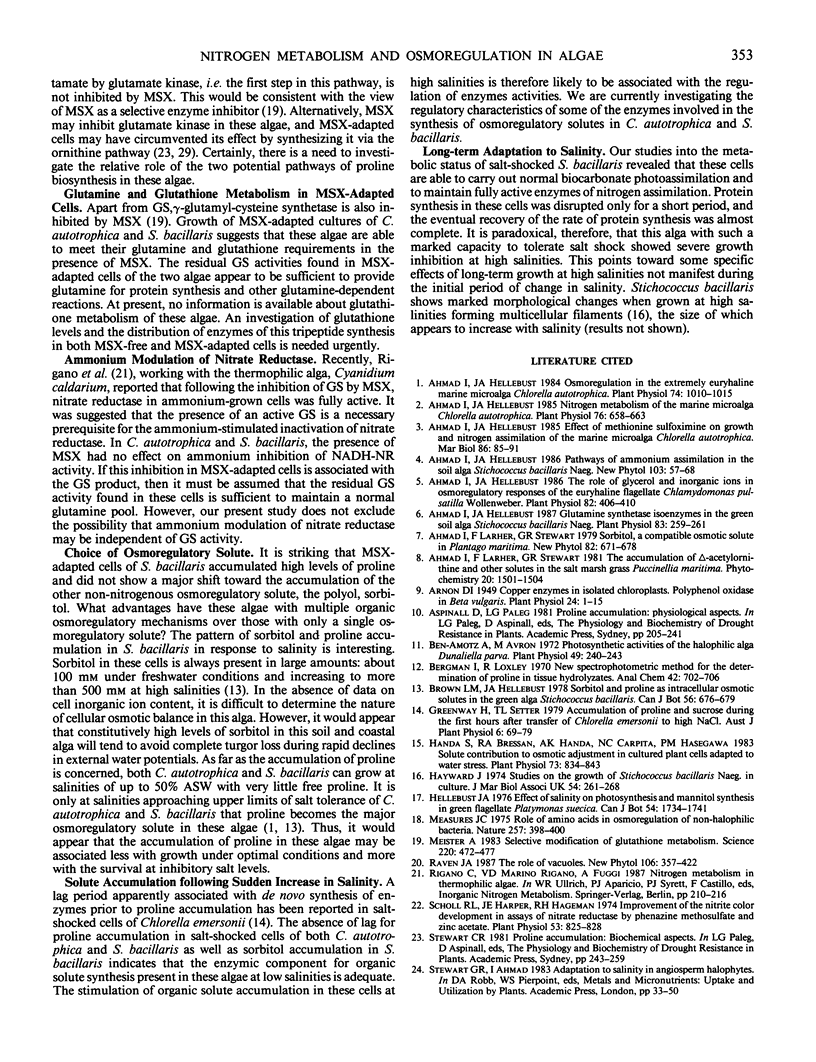

Selected References
These references are in PubMed. This may not be the complete list of references from this article.
- Ahmad I., Hellebust J. A. Glutamine Synthetase Isoenzymes in the Green Soil Alga Stichococcus bacillaris Naeg. Plant Physiol. 1987 Feb;83(2):259–261. doi: 10.1104/pp.83.2.259. [DOI] [PMC free article] [PubMed] [Google Scholar]
- Ahmad I., Hellebust J. A. Nitrogen Metabolism of the Marine Microalga Chlorella autotrophica. Plant Physiol. 1984 Nov;76(3):658–663. doi: 10.1104/pp.76.3.658. [DOI] [PMC free article] [PubMed] [Google Scholar]
- Ahmad I., Hellebust J. A. Osmoregulation in the Extremely Euryhaline Marine Micro-Alga Chlorella autotrophica. Plant Physiol. 1984 Apr;74(4):1010–1015. doi: 10.1104/pp.74.4.1010. [DOI] [PMC free article] [PubMed] [Google Scholar]
- Ahmad I., Hellebust J. A. The Role of Glycerol and Inorganic Ions in Osmoregulatory Responses of the Euryhaline Flagellate Chlamydomonas pulsatilla Wollenweber. Plant Physiol. 1986 Oct;82(2):406–410. doi: 10.1104/pp.82.2.406. [DOI] [PMC free article] [PubMed] [Google Scholar]
- Arnon D. I. COPPER ENZYMES IN ISOLATED CHLOROPLASTS. POLYPHENOLOXIDASE IN BETA VULGARIS. Plant Physiol. 1949 Jan;24(1):1–15. doi: 10.1104/pp.24.1.1. [DOI] [PMC free article] [PubMed] [Google Scholar]
- Ben-Amotz A., Avron M. Photosynthetic Activities of the Halophilic Alga Dunaliella parva. Plant Physiol. 1972 Feb;49(2):240–243. doi: 10.1104/pp.49.2.240. [DOI] [PMC free article] [PubMed] [Google Scholar]
- Bergman I., Loxley R. New spectrophotometric method for the determination of proline in tissue hydrolyzates. Anal Chem. 1970 Jun;42(7):702–706. doi: 10.1021/ac60289a036. [DOI] [PubMed] [Google Scholar]
- Handa S., Bressan R. A., Handa A. K., Carpita N. C., Hasegawa P. M. Solutes contributing to osmotic adjustment in cultured plant cells adapted to water stress. Plant Physiol. 1983 Nov;73(3):834–843. doi: 10.1104/pp.73.3.834. [DOI] [PMC free article] [PubMed] [Google Scholar]
- Measures J. C. Role of amino acids in osmoregulation of non-halophilic bacteria. Nature. 1975 Oct 2;257(5525):398–400. doi: 10.1038/257398a0. [DOI] [PubMed] [Google Scholar]
- Meister A. Selective modification of glutathione metabolism. Science. 1983 Apr 29;220(4596):472–477. doi: 10.1126/science.6836290. [DOI] [PubMed] [Google Scholar]
- Scholl R. L., Harper J. E., Hageman R. H. Improvements of the nitrite color development in assays of nitrate reductase by phenazine methosulfate and zinc acetate. Plant Physiol. 1974 Jun;53(6):825–828. doi: 10.1104/pp.53.6.825. [DOI] [PMC free article] [PubMed] [Google Scholar]


